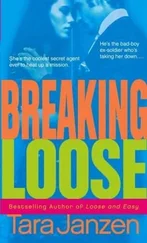Walt, in the episode “Face Off” (10/9/11), demonstrates the dangers of his ambitions and resolve when he plants a bomb on the wheelchair of Hector Salamanca, an elderly Hispanic man who Walt first encountered when he and Jesse were on kidnapped by his nephew Tuco. From the moment they met, Hector was suspicious of Walt’s actions and he recognizes that underneath the exterior look of a frightened man in glasses is a man who is capable of great violence and evil. It is no shock when Walt turns Hector into a bomb and uses him to kill Gus Fring as he seeks to take control of the business. Nor is it a shock to learn that Walt is no longer a safe, family man who respects children when it is revealed that Walt is the one who poisons Jesse’s girlfriend’s son in order to force Jesse to go along with Walt’s plan to kill Gus.
After removing the threat to himself and his family by killing Fring at the end of season four, Walt is able to crow to Skyler in the episode “Fifty-One” (8/5/12) that he won. While Walt tells his wife that he has taken control of the drug business he also sends her the message that he has also won control of the home and his family. As Walt celebrates his victory, Skyler tells him that she is afraid of him and that she does not want him around her children because as Walt told her in season four episode six that he is now the danger. It is for this reason that Skyler tells Walt in season five that she no longer cares if he lives or dies. Moreover, Skyler removes Walt’s motivation for ‘breaking bad’ when she takes away his children, a decision that challenges his authority. Yet, what Skyler fails to see until season five is that Walt is no longer the meek man who she could manage, instead he is now a forceful man who has committed innumerable acts of violence and mayhem to maintain control of his business and he understands how to use those same skills in his marriage and home.
In season five Walt’s transformation from “Mr. Chips to Scarface” is completed when Walt sanctions the killing of a young kid who witnesses them rob a train in the episode “Dead Freight,” (8/12/12) and when he kills Mike Ehrmantraut (Jonathan Banks), who had worked for Gus and then goes into business with Walt only to realize that Walt is a man who is solely driven by ambition and greed. After Mike challenges Walt’s authority, he becomes a liability that Walt decides to handle in the episode “Say My Name” (8/26/12). When Mike refuses to provide the names of the men associated with Fring’s operation, an angry, frustrated Walt shoots him with Mike’s own gun. At the end of season five, Walter White, the former dowdy, law-abiding citizen, is displaced by his alter-ego Heisenberg, a man who reclaims his masculine authority both in society and at home through brutality, intimidation, and stubborn will power. His manhood is reclaimed by taking control of his home life, his relationships, and his business and this allows Walt to restore his masculinity and status as father, husband, and provider.
CONCLUSION: “I AM THE DANGER”
At the end of season five, the audience is left to wonder if men like Walt, who declare that they want to build empires, are capable of redemption. Walt’s constant need to assert that he is a man and can provide for his family illustrates the dangers of the “self-made man” and “hegemonic masculinity” in the formation of American masculinity at a time of great upheaval at the social and economic level. These ideas, constructed around the argument that the only means for a man to achieve respect is through brusque behavior and, if needed, violence, were once accepted as normal, but have since the 1960s been questioned and challenged as women, minorities, and LGBT individuals struggle for equal rights. As I have argued it is men like Walt who use ‘a perceived crisis’ of masculinity as the rationale for returning to outmoded modes of male authority in an attempt to take control. Like the empty pants in the first shot of the pilot, Walt’s transformation demonstrates that often in an effort to reclaim control men resort to empty rhetoric and performances of hegemonic masculinity because these modes have been crucial in the formation of the nation. At a time when America struggles to decide its future and the future roles of men in the twenty-first century, a series like Breaking Bad can provide viewers with a portrayal of what it means to embrace the idea of the self-made man and how, along with violence, the idea has been used and continues to be used by men to retake control of their lives and the nation.
Bruzzi, Stella. Bringing Up Daddy: Fatherhood and Masculinity in Post-War Hollywood. London: British Film Institute, 2005.
Butler, Judith. Gender Trouble . New York: Routledge, 1999.
Connell, R.W. Masculinities . 2 nded. Berkley, CA: University of California Press, 2005.
Kimmel, Michael. Manhood in America: A Cultural History . Boston: Free Press, 1996.
———. Misframing Men: The Politics of Contemporary Masculinities . New Brunswick, NJ: Rutgers University Press, 2010.
Lavery, David. “Bad Quality: Breaking Bad as Basic Cable Quality TV.” Critical Studies in Television. September 2010. http://cstonline.tv/.
Marcotte, Amanda. “How to Make a Critically Acclaimed TV Show about Masculinity.” Jezebel. 2011. http://jezebel.com/5837945.
McGillis, Roderick. He Was Some Kind of a Man: Masculinities in the B Western . Waterloo, Canada: Wilfrid Laurier University Press, 2009.
Miller, Martin. “The End Nears for Walter White of Breaking Bad.” Los Angeles Times . 1 September 2012. Latimes.com/entertainment/tv/showtracker/la-et-st-breaking-bad-vince-gilligan-20120901,0,0854913.
Nietzsche, Friedrich. “On the Genealogy of Morals.” Basic Writings of Nietzsche . trans. Walter Kaufmann. New York: The Modern Library, 2000.
Robinson, Sally. Marked Men: White Masculinity in Crisis . New York: Columbia University Press, 2000.
Chapter 5
NOT YOUR AVERAGE MEXICAN: BREAKING BAD AND THE DESTRUCTION OF LATINO STEREOTYPES
Andrew Howe
Since its debut on AMC in early 2008, Vince Gilligan’s Breaking Bad has been populated with increasingly complex depictions of Latin identity. [1] Terminologies can be difficult to utilize with precision, particularly as a wide range of variable usage exists. For instance, both “Latino” and “Hispanic” are used to denote those of Latin American origin, although people from Spain can also be implicated with these terms. Although “Tejano” is usually specific to Mexican-Americans living in Texas, it is occasionally used to denote Texans originating from other Latin American countries. The same is true for “Chicano,” although this term sometimes denotes Mexican-Americans living only in California, and sometimes across the border states. The common denominator with this term is that the individual has an identity stake with at least two geopolitical entities. In The Chicano-Studies Reader , Fernando Peñalosa (2010) notes the multiple factors—cultural, political, ethnic, and biological—that inform such discussion (16-27). As this essay is a character study, and the characters analyzed derive from a variety of backgrounds, no singular term will be employed. However, in service of consistency when discussing the series’ overall project of portrayal, the term “Latino” will be employed, as it most precisely indicates a general background shared by the various characters, nearly all of whom are male.
As a border narrative, many of the series characters are Latino. However, there is a wide variability in the portrayal of such characters, from the crazed, drug addicted Tuco to the suave businessman Gustavo Fring, and from the axe-wielding Salamanca cousins to their wheelchair-bound uncle, Hector. In establishing such a wide range of Latino characters, the series brings to the surface complicating social factors. For instance, although he is the drug kingpin for the American Southwest and has direct connections to the Mexican cartels, Fring is originally from Chile. Although little is offered about his background, he clearly has African ancestry, bringing an interesting racial component to the series’ context. Likewise, the background offered for the murderous Salamanca cousins is likewise intriguing. The narrative offers no information as to whether or not they are Catholic, but they do pay homage to a local death deity. Despite their depravity, the Salamancas are thus humanized in that they do not conform to the typical stereotypes of Latino identity usually displayed on American television. Other characters round out the broad-based depiction. Despite holding a job in law enforcement, Steve Gomez is quiet and nurturing, not exhibiting any of the machismo often associated with powerful Latino characters. The swagger and braggadoccio are instead brought by his partner, the Anglo Hank Schrader. The small-time drug dealer nicknamed Combo appears Anglo; indeed, the audience only learns of his Latino background following his death, when his real name is revealed. And the boy Brock Cantillo undergoes an identity crisis. His mother gives him an English name and recognizes that education is the key to leaving the barrio, although he is at risk of falling into the drug culture that claims so many of the poverty-stricken youth that share his background. This chapter will offer close analyses of these characters and others, exploring the manner in which they engage with the landscape of political, economic, social, and cultural variability in depicting Latinos.
Читать дальше












